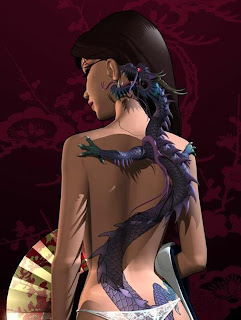Sit down in any small-town diner in the West of the New World, and like as not, you’ll hear stories of ghost towns. These are minor trail-stops that wasted away when the course of the railroad or the highway took civilization elsewhere; or mining towns that went from boom to bust when the mines dried up. Most of the time, the stories say they’re haunted. Sometimes, the stories are true.
It’s not a rare thing to encounter a ghost--most human habitations of any size have their share of them. What makes the real ghost towns of West unusual is that they’re not places of single hauntings, or even a group of restless spirits. In other places, a dilapidated tavern may be full of ghostly revellers and staff. Ill-fated hotels may have multiple patrons who never leave. But visitors to some of these towns have recounted tales of almost entire, if small, populations of ghosts.
This is a misperception, or perhaps it’s better termed a trick. There are no ghosts in these towns. The towns themselves are the ghost.
For reasons unknown to modern thaumaturgical sciences, the West was fertile ground for the development of deranged genius loci--spirits of place. Maybe these lonely places grow mad with isolation, or maybe they’re born bad--a final curse of the Native shamans driven from their ancestral lands. Whatever the case, the spirits of these towns, either in madness or as an attempt to ease their loneliness, populate their streets and structures with the semblances of people from their memory. Essentially, they put on a phantasmagorial puppet show.
Some ghost towns are homicidal in their madness and seek to lure in living humans, then kill them in fiendish ways. Others are simply lonely, and will attempt to beguile or otherwise convince humans into staying with them. Whatever their desires, they sit quietly in the high desert, the lonely praire, or snow-bound mountainside, forlorn and waiting.
GHOST TOWN
No. Enc.: 1
HD: 12
AC: see below
Abilities: Ghost towns may be destroyed, or at least weakened to the point where they can no longer manifest significantly on the prime material plane, only by destruction of most of the structures making up the town--so traditional hit points don’t apply. Eidolons created by the town act as ghosts, but of lower hit die, as the total number of its manifestations can have no more than 12 hit dice, total. The ghost town may produce more phantasms than this, but the rest are simply illusions with no substance. None of these sub-ghosts automatically cause aging and fear, but they can display a horrifying countenance which will do so. Ghost towns may also use telekinesis as per the spell, but must wait 1d4 rounds to do so again.
2 hours ago

















